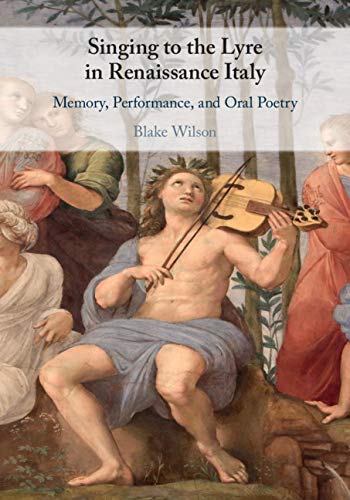By Blake Wilson (NHC Fellow, 2016–17)

Cambridge, UK: Cambridge University Press, 2020
From the publisher’s description:
A primary mode for the creation and dissemination of poetry in Renaissance Italy was the oral practice of singing and improvising verse to the accompaniment of a stringed instrument. Singing to the Lyre is the first comprehensive study of this ubiquitous practice, which was cultivated by performers ranging from popes, princes, and many artists, to professionals of both mercantile and humanist background. Common to all was a strong degree of mixed orality based on a synergy between writing and the oral operations of memory, improvisation, and performance. As a cultural practice deeply rooted in language and supported by ancient precedent, cantare ad lyram (singing to the lyre) is also a reflection of Renaissance cultural priorities, including the status of vernacular poetry, the study and practice of rhetoric, the oral foundations of humanist education, and the performative culture of the courts reflected in theatrical presentations and Castiglione's Il cortegiano.
Awards and Prizes
Choice Outstanding Academic Title (2020)Subjects
Literature / Music / Italian Literature / Italian Renaissance / Performing Arts / Poetry /Wilson, Blake (NHC Fellow, 2016–17). Singing to the Lyre in Renaissance Italy: Memory, Performance, and Oral Poetry. Cambridge, UK: Cambridge University Press, 2020.